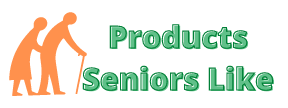As we grow older, certain bodily functions may need additional attention. One such issue is the challenge of managing an overactive bladder (OAB), which is especially common among the elderly. Understanding what is the best medication for overactive bladder in the elderly is crucial for improving quality of life and maintaining independence. In this article, we will discuss various medications and treatments available to help manage OAB effectively.

Understanding Overactive Bladder
Before diving into medications, it is vital to understand what an overactive bladder is. OAB is a condition characterized by a sudden, uncontrollable urge to urinate, sometimes resulting in involuntary loss of urine. This can be distressing for many, impacting daily activities and emotional well-being.
Causes of Overactive Bladder
Several factors can cause OAB in the elderly, including age-related changes to the bladder muscles, neurological disorders, and certain medications. Understanding the root cause is essential in determining the best treatment plan.
Available Medications for Overactive Bladder
The question of what is the best medication for overactive bladder in the elderly is complex, as it varies per individual based on their specific health conditions and responses to treatment. However, several medications are commonly used:
Anticholinergics
This class of drugs helps relax the bladder muscles, reducing the urge to urinate. Common options include oxybutynin and tolterodine. While effective, they can have side effects such as dry mouth and constipation, so regular monitoring is important.
Beta-3 Adrenergic Agonists
These drugs, like mirabegron, work by relaxing the bladder muscle and increasing the amount of urine the bladder can hold. They tend to have fewer side effects compared to anticholinergics.
Topical Hormone Therapy
For postmenopausal women, applying estrogen to the vaginal wall can improve urinary symptoms since it strengthens the tissues around the bladder and urinary tract.
Non-Medication Treatments
In addition to medication, several lifestyle adjustments and therapies can assist:
Pelvic Floor Exercises
Known as Kegel exercises, these can help strengthen the muscles around the bladder, giving more control over urination.
For more tips on maintaining physical health, check out our article on nail care for the elderly.
Bladder Training
This involves scheduling bathroom visits and gradually extending the time between them to improve bladder control. It requires patience and practice but can significantly shift bladder control.
FAQs on Overactive Bladder
Why is OAB more common in the elderly?
Age-related changes in the bladder, medications, and health conditions common in old age can increase OAB’s prevalence.
Can lifestyle changes alone manage OAB?
While lifestyle changes can be effective, combining them with appropriate medications often yields better results.
Are there risks to using OAB medications long-term?
Most are safe for long-term use under medical supervision, but regular check-ups are recommended to monitor side effects.

Conclusion
Navigating what is the best medication for overactive bladder in the elderly involves understanding the condition, consulting healthcare professionals, and tailoring treatments to individual needs. Empowering the elderly with the right tools ensures they maintain their independence and enhance their quality of life.
This article contains affiliate links. We may earn a commission at no extra cost to you.

